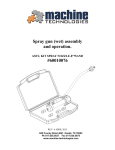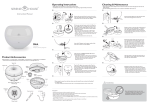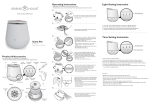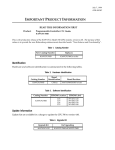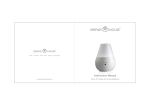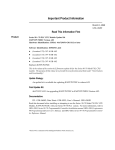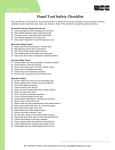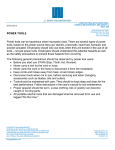Transcript
WSI 1. 2. 3. 4. 5. 6. 7. 8. 9. 10. 11. 12. 13. 14. 15. 16. 17. 18. 19. 20. 21. North Dakota Workforce Safety & Insurance www.workforcesafety.com PNEUMATIC POWER TOOLS Always read and understand the instructions before using the equipment. Employees will be properly and thoroughly trained before attempting to do any work with any pneumatic tools. Never carry a tool by the air hose. Never yank the air hose to disconnect it from the receptacle. Keep cords and hoses away from heat, oil, and, sharp edges. Disconnect tools when not using, before servicing, and when changing accessories such as blades, bits, and cutters. Keep all observers at a safe distance from the work area. Compressed air guns should never be pointed toward anyone. The user should never “dead-end” it against him or herself or anyone else. Secure work with clamps or a vise, freeing both hands to operate the tool. Avoid accidental starting. Do not hold fingers on the switch button while carrying tools. Maintain tools with care. Follow instructions in the user’s manual for lubricating and changing accessories. Be sure to keep good footing and maintain good balance. Remove all damaged portable air tools from use and tag them “DO NOT USE”. Appropriate personal protective equipment must be worn to protect against hazards that may be encountered while using pneumatic tools. Eye protection is required and face protection is recommended for employees working with pneumatic tools. Pneumatic power tools shall be secured to the hose. Do not use air hoses to lower or raise tools. Keep the lines and connections in good condition. Use right size equipment for the job being done. When changing bits, sockets, or attachments, the hose shall be disconnected. Pneumatic tools that shoot nails, rivets, or staples, and operate at pressures more than 100 pounds per square inch, must be equipped with a special device to keep fasteners from being ejected unless the muzzle is pressed against the work surface. Airless spray guns that atomize paints and fluids at high pressures (1000 lbs. or more per square inch) must be equipped with automatic or visual manual safety devices that will prevent pulling the trigger until the safety device is manually released. Date: _____________________________________ June 2003

